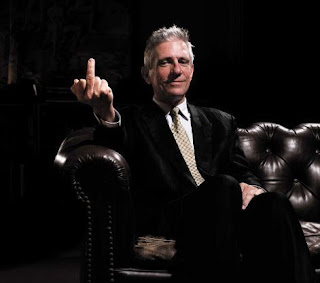The term stereotype is a metaphor mostly used and misused in public discussion pejoratively.
A person will be accused of stereotyping someone or a group, as an unacceptable, morally wrong, view and expression.
Stereotyping is defined poorly, but used in the public domain despite academic definition.
I.e. it has more uses than dicitionaries define. It has a range of uses. But there are themes that help us refine the spectrum of uses: a label appplied to groups of people based on erroneous assumptions.
E.g.
Blacks are strong.
Chinese gamble.
Jews are arrogant misers.
Whites are racist.
Lesbians are ugly.
Men are aggressive.
Statements like these are called false and harmful assumptions consequential to stereotyping itself derived by only a sample observation that claims to identify conformity of group members to a behaviour or physical appearance.
These statements also make the mistake of particular to universal, they paint a whole group with the same brush, based on only part of the group.
If we ignore the official definitions, as do most users of the term, we see that what is called stereotyping is merely a kind of generalisation based on observation.
Stereotyping is really just another form of generalising people groups to behave and appear with commonalities derived from enough observations of a group's behaviour or appearance to make predictably accurate conclusions, but also not so accurate consequential assumptions.
These generalisations are described by snowflakes as Stereotyping. Snowflakes and SJWs have manipulated the term to serve their political agenda.
E.g. Stereotyping is argued by snowflake users of the term as a negative, immoral and morally inaccurate activity. This moves the term from empirical to moral. Snowflakes can tackle the moral with a greater sense of social justice than tackling the empirical evidence.
But they cannot ignore the fact that people do generalise ethnic and other group behaviour based on consistent behaviour and appearance. They also ignore the fact that people do live up to stereotypes.
Specific behaviours and appearances repeated over and over again, confirmed by experience are going to be noticed. Further, most people want to be noticed for their group behaviour conformity or have no choice when it comes to inbred appearances, like skin, hair colour and eye shape. People often stereotype themselves.
The subject of the stereotyper, the stereotyped, is responsible for conforming to stereotypes.
Not all groups are ethnic. Other groups behave consistently by:
- Sexual gender
- Sexual preference
- Religion
- Age
- Wealth
- Social status
- Height
- Weight
- Profession
- Hobbies
- Talent
- Generation
Stereotypes, as generalisations, usually work because the members of the groups above consistently appear or behave in these specific ways and to the point of highly accurate prediction.
As We have said before, this activity is helped by two things natural to humans:
1. People behave and appear like herds.
2. People are good at identifying patterns.
Both of these factors are combined to support and ease the act of generalising.
These two factors are likely survival instincts. Therefore our conscious rational awareness occurs AFTER internal awareness of what our brain is doing intuitively, without reason or moral judgment. In survival or evolutionary terms, they allow people to tell the difference between their tribe and those from other tribes and thus to predict dangerous behaviour.
There is a cost in getting it wrong. Not all assumptions are true. But people tend to err on the side of caution and the side of likelihood. People tend to trust their instincts. Also, instinct and intuition occur prior to conscious judgment. You will catch yourself generalising. You can go with it or try and ignore it.
Stereotyping, if we accept the moral version of the misnomer, is not a prejudice based on ideology or immoral antisocial conditioning. It is an irrational intuitive activity that only occurs from observation, so it is not the sole product of an observer. It is a factor combined with the factor of actual behaviour that concludes with the product. It takes two to Stereotype. Both the object and the subject are required in order to stereotype.
If people stopped consistently conforming to the behaviour shared among their group, there would be no stereotyping.
If almost always, Chinese are seen dining out only at Chinese restaurants, then a stereotypical behaviour is occuring and this behaviour will be noticed. Thus the statement is made, Chinese people are reliably seen to eat Chinese when they dine out.
If taxi drivers are almost always Indian, the statement can be made that most taxi drivers are Indian. This is confirmed by observation.
So even the assumptions consequential to stereotyping can be generalised and confirmed empirically:
Tall people are domineering.
Short people are angry.
Gay men overact.
Obese people are lazy or weak.
Rich people are arrogant.
Tradies are bogan.
Men are stronger than Women.
The assumptions, so called, above are not true for all, but true for some, and this is the point of a generalisation. The assumptions at least have the potential to be true for some, true in general.
Classic and popular stereotypes are often targeted as utterly offensive and untrue and even harmful.
When generalisations are made poorly, derived from moral principles and based on tiny samples, that draw attempts to reason unfounded assumptions, this is understandble. Many stereotypes lead to false assumptions. But that is the rational aspect of the activity. Some assume that if you do this behaviour, you wil do another behaviour.
Many stereotypes include fake rational assumptions that are derived from other than logical activity and or not even attempting to be generally accurate. They might include:
Asians are bad drivers.
Women are timid.
Gays are sex obssessed.
Jews are misers.
This kind of statement is often found to be a fake stereotype or generalisation. It starts not with observation but with a moral position, usually a kind of xenophobia, and uses stereotyping to make the morality seem like a rational logical generalisation. But true and honest stereotyping without unfounded assumption is not derived from a moral position, but an empirically verifiable behaviour that occurs in enough cases to qualify as being generally true.
Morally driven stereotyping is likely to produce unfounded assumptions rather than evidence based conclusions. The purpose of this stereotyping is to negatively discriminate against a group you don't like or you think is inferior. It may also derive from ancient instinct to preserve your own people from attack by others. As always, the instinct comes first and the rational mind kicks in to treat it. Sometimes the treatment is antisocial and an attack itself.
But this dishonest activity does not refute the fact that people behave similarly in groups.
But it's not always intentionally bad. Comedians have always represented people groups as stereotypes. Look at Apu in the Simpsons. The intent, whether good or bad, is to get a laugh. Comedians say what many think. The laughter is a relief, because we can't say in public what we think about people groups and their common behaviours. So it is no wonder some comedy is offensive to those of the group being sent up. The blame is not deserved soley by the comedian. If people didn't find it funny, it wouldn't be made fun of or joked about. But people do find stereotyping funny. Being a comedic setting, laughing feels forgivable or more acceptable than in every day life situations.
Further, movies and TV need stereotypes to perform characters from certain groups.
There are many examples of groups sending themselves up on TV, such as Crazy Rich Asians, Fat Pizza, Housos, Upper Middle Bogan, Kath and Kim, Goodness Gracious Me, Black Comedy.
Most standup comedians of minority race will spend the gig cracking stereotypical jokes about themselves.
Not all stereotyping is funny, or good, or accurate or useful. But it happens, it is often accurate, and we need to know why.
It is a human feature that different people groups tend to do the same things.
But the term stereotype is not a good choice of term to describe what it does. It is a metaphor from the original use of the term, where stereotyping was and still is a printing function.
In printing, a stereotype is a mould that is used to create the same product. Every product of a stereotyping machine will print the same thing. Its more efficient construction enabled printers to avoid the labour-intensive resetting of types and other moulds for the same machine.
The printed product of stereotyping is always the same. But this is not the case with ethnic or group behaviour or even appearance. There are exceptions, so the term is not an exact analogy when used metaphorically as above.
It is not the case that all Indians are taxi drivers or all taxi drivers are Indians. But if you hail a taxi in a country with a large minority of Indians, you are likely to observe an Indian in the driver's seat.
Rather than accepting the misue of Stereotyping, it is more accurate to explain that ethnic and people groups tend to behave a certain way in general. The fact that groups do behave the same in general is not a moral judgment. They do.
Why wouldn't they? They share membership with a community of people from whom they are bred and raised. Children in a group are indoctrinated in the morals, world-views, customs and traditions of their group, which often include rites, practices, prohibitions and other behviours and behaviours produced by consequence of ideology. Genetic heredity explains consistency of appearance.
Consistent behaviour is encouraged within groups, preserved and even enforced, but especially when members live among very different ethnic groups as minorities, to express their ethnic identity publically and to make themselves more distinctive as a group and to satisfy feelings of ethnic patriotism.
To pejoratively label the generalising of groups, as Stereotyping, you reject group and ethnic expression.
Stereotyping in this sense is not bad. It is not good. It is a generalisation based on behaviours observed among enough members of an ethnic or other group to have a high level of predictability.
People who behave like others in their group are confirming the concept of stereotyping.
Most Asian university students do study the same range of disciplines and do not usually study others.
Most taxi drivers are Indian.
If you want to stop stereotyping, you need to ask people to stop behaving and appearing the same way as their fellow group members.



















No comments:
Post a Comment